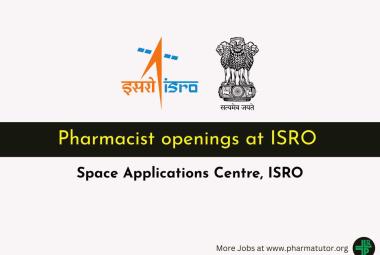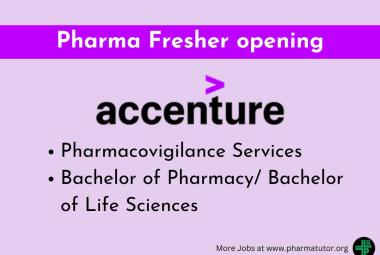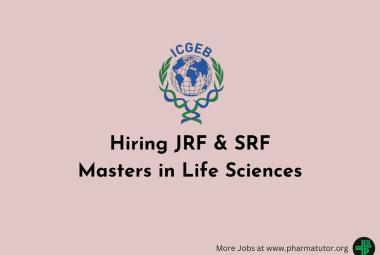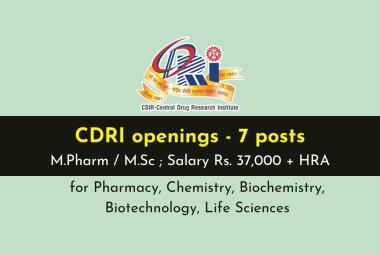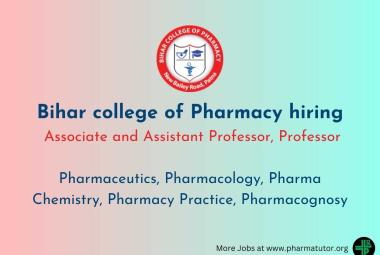About Authors:
Deepti Soni*, Rathore KS1, Nema RK2
*College of Pharmaceutical Sciences, Behrampur, Orissa
1BN Institute of Pharmaceutical Sciences, Udaipur, Raj.
2Rishiraj College of Pharmacy, Indore-MP
*deepti_jazz@yahoo.com
Introduction
A prodrug is a pharmacological substance (drug) that is administered in an inactive (or significantly less active) form. Once administered, the prodrug is metabolised in vivo into an active metabolite (Wadhwa LK, 1994). Almost all drugs possess some undesirable physiochemical and biological properties. Their therapeutic efficacy can be improved by minimizing or eliminating the undesirable properties while retaining the desirable ones. This can be achieved through biological, physical or chemical means (Loe A, 1971, Balant LP, E Doelker, et al., 1990, Jha V, 1995).
- The biological approach is to alter the route of administration, which may or may not be acceptable to the patient.
- The physical approach is to modify the design of the dosage form such as controlled delivery of drugs.
- The chemical approach is the best approach in enhancing drug selectivity and minimizing the toxicity.
REFERENCE ID: PHARMATUTOR-ART-2000
Introduction of new drug in the market is an expensive and time consuming process. So it was thought to modify the physical and chemical parameters of already existing drugs whose use is restricted because of some reason or other notable side effects, improper organoleptic properties, difficulties in formulation, frequent dosing requirements etc. One important approach to do this is through pro-drug approach (Shameem MT, 1993, Bonia FP, 1994).
A prodrug is a chemically modified inert precursor which upon biotransformation liberates the pharmacologically active parent compound. Thus, in contrast to soft drugs are inactive and biotransformed in a predictable manner into active metabolites. A prodrug is also called as pro-agent bioreversible derivative or latentiated drug. The design approach is also referred to as drug latentiation (Jain NK, 1994).
Various goals achieved using prodrug approaches are shown as follows:-
Applications of prodrug approach:
- Improvement of gastrointestinal tolerance:
Several drugs cause gastric irritation and damage to gastric mucosa through direct contact, increased stimulation of acid secretion or through interference with protective mucosal layer. The NSAIDS have such tendency e.g. benorylate (Jaksic PM, 1996).
- Increase in systemic availability:
Most of these drugs are absorbed by passive diffusion for which lipophilicity is an important prerequisite. Addition of hydrophobic group to a drug improves their gastrointestinal absorption e.g. bacampicillin.
- Improvement of taste:
One of the reasons for poor patient compliance, particularly in case of children is the bitterness, acidity of drug. Two approaches can be utilized to overcome bad test of drug (Bansal AK et al., 2001).
First is reduction of drug solubility in saliva, and other is to lower the affinity of drug towards taste receptors. e.g. palmitate esters of chloramphenicol.
- Diminishing gastrointestinal absorption:
The concept is to delivery an active ingredient as a prodrug possessing the ability to remain unabsorbed in upper g.i.t. This is useful in the treatment of colonic diseases. e.g. 5-aminosalicylic glycyl.
- Increased aqueous solubility:
Drugs with hydroxyl functionality can be converted into their hydrophilic forms by use of half esters such as hemisuccinates and hemiglutorates. e.g. phosphate esters of testosterone.
- Improvement of self-life of drug:
A drug may destabilize either during its shelf-life or in the g.i.t. when given orally. The approach is to improve the stability of mean of prodrug design. e.g. bisulfite prodrugs of azacylidines.
- In sustained release preparations:
Prodrug approach is employed for drugs possessing short biological half lives and this eliminates frequent dosing of drugs. e.g. bitolterol, O-di-ptoleate ester of n-butyl nor-adrenaline.
- Site specific drug delivery:
After its absorption in system circulation the drug is disturbed into various parts of body including target sites as well as non-target tissues. This problem can be overcome by prodrug design. The prodrug is converted into its active form only in target organ/tissues by utilizing either specific enzyme or a pH value different from the normal pH for activation. e.g. sulfasalazine is a prodrug of mesakimine which is useful in treatment of ulcerative colitis (Mandell, AK).
Different areas of prodrug design
I. Prodrugs for AIDS and Antiviral Agents:
Zidovudine work as a metabolic antagonist against reverse transcriptase, the antiviral activity is time dependent, so an adequate AZT concentration in a body should be maintained to achieve the anticipated anti-AIDs effect. So the synthesis of ester prodrugs of zidovudine was carried out. (Brahmankar DM, 1995)
These prodrugs showed high hydrophobicity and favorable tissue distribution. The enzymatic hydrolysis rates for AZT esters in presence of mouse enzyme system (plasma, liver and intestine) were highly dependent on length of the acyl chains.
II. Prodrugs for Anticancer Agents:
5-flurouracil is an anticancer agent which possesses low lipophilicity and low water solubility. To overcome these properties 1-alkylcarbonyloxymethyl prodrugs were prepared and evaluated for their anticancer activity. These prodrugs were relatively more effective in delivering total 5-flurouracil species through skin. (Higuchi T, et al., 1975, Sugawara M, 2000)
III. Colon Specific Prodrugs:
5-aminosalicylic acid is an effective colon specific drug which will be absorbed in stomach itself before it reaches to the large intestine. To overcome this side effect the prodrug of 5-aminosalicylic acid were prepared using glycine (Solan, KB, 1992).
In-vivo and in-vitro studies showed that a large fraction of 5-aminosalicylic acid glycine was delivered to large intestine and was activated to liberate 5-aminosalicylic acid (Suginoshit, et al., 2002).
IV. Prodrugs for b-blockers:
Propranalol is an important b-blocker, which lacks in oral delivery. To improve oral delivery of propranolol ester prodrugs were prepared and tested in-vitro and in-vivo (Kawaguchi, TK, 1990).
V. Steroid Prodrugs:
Prednisolone is a steroid which lacks in aqueous solubility. So to overcome this property the prodrugs were prepared usinga, b and g cyclodextrins. The aqueous solubility of these prodrugs is much higher than that of prednisolone(Sugawara M, 2000).
VI. Dermal Products:
Naproxen (Jung YJ, 2000) and ketoprofen (Shameem M, 1993) or the NSAIDs which lacks in lipophilic properties and less stable in aqueous solutions. The acyloxyalkyl esters of this drug as prodrug were shown much more lipophilic than their parent molecules or highly stable in aqueous solution and hydrolyzed readily in parent drug both in human serum and human skin (Shameem M, 1993).
VII. Prodrugs of Non-steroidal Anti-inflammatory Drugs (NSAIDs):
NSAIDs belong to another group of therapeutic agents where prodrug approach has been utilized. Although, many NSAIDs are in use for the management of patients suffering from various inflammatory conditions, the clinical value of these drugs is limited due to their gastrointestinal side effects, which are due to direct local action on the gastric mucosa, particularly of acidic NSAIDs and or generalized systemic action that takes place after absorption of these agents. Many NSAIDs which reduced toxicities and side effects have been developed (Yano H, 2001).
Types of prodrugs
i) Carrier Linked Prodrugs:
A drug molecule, the usefulness of which is limited to its adverse physicochemical properties is attached to a carrier group or promoiety to form a new compound, the prodrug, from which the parent drug is regenerated in-vivo (Sharma PD, 1986).
Prodrug considered as drug containing specialized non-toxic protective group utilized in transient manner to alter or eliminate the undesirable properties of parent drug molecule. In this type of prodrug, the active drug is covalently linked to an inert carrier or transport moiety. Such prodrug has modified lipophilicity due to attached carrier. The active drug is released by hydrolytic cleavage either chemically or enzymaticaly. The used moiety is ester or amides (Bagshawe, KD 1993, Sharma SK, 1992).
The unique feature of this approach is that the physicochemical properties can be tailored by means of changing the structure of the promoiety.
An illustrative example is dipivefrine the prodrug of epinephrine.
ii) Mutual Prodrugs:
Two pharmacological agents are coupled together so that each act as a promoiety for another such derivatives has been termed as mutual prodrug. e.g. benorylate is a mutual prodrug of aspirin and paracetamol, therefore, used to treat chronic inflammation at a decreased dosage and at reduced risk of irritation(Rautio J, et al., 1998).
iii) Bioprecursors:
These are obtained by chemical modification of active drug but do not contain a carrier. Such type of prodrug has almost the same lipophilicity as the parent drug and is bioactivated generally by redox biotransformation.
Bioprecursors prodrugs contain no promoiety but rather relies upon metabolism to introduce the necessary functionality to create an active species e.g. NSAID sulindac is active as the sulfoxide and must be reduced metabolically to active sulfide. Administration of the inactive form has the benefit of reducing the git irritation associated with the sulfide. e.g. phenylbutazone a bioprecursor of oxyphenbutazone(Jones G.,1985).
iv) Trepartate Prodrugs:
Structures of most prodrugs are bipurtate in nature in which the parent drug is attached directly to promoiety. However in some cases bipartate prodrug may be unstable due to inherent nature of the drug promoiety bond. This problem can be overcome by designing a tripartate prodrug utilizing a spacer or connector group between the drug and promoiety. The spacer or connector must be designed in such a way that the initial activation is followed by spontaneous cleavage of remaining drug spacer bond under physiological conditions to release parent drug.
v) Macromolecular Prodrugs:
Drug is dispersed or incorporated into the polymeric system without formation of covalent bond between drug and polymer. This system is also referred to as macromolecular prodrug system. Polymers used are both naturally occurring and synthetically prepared. Most commonly used polymers are proteins as antibodies lipoproteins and polypeptides as polysine and polyglutamic acid, synthetic polymers as copolymer of N-vinyl pyrolidone and polysaccharides as dextrin; starch etc., e.g. p-phenylendiamine mustard is contently attached to polyamino polymer backbone polyglutamic acid (LebachFH, 1996).
Conclusion
Prodrugs are the molecules that are inactive substances but will get converted into the active substances in our body. Enzymes that are involved in the metabolism are involved in this conversion. The change to active form may take place even chemically. The exact opposite molecule to the prodrug is the soft drug. Basically these are the drugs that are active and after showing their activity, they will get converted into inactive metabolite which is not toxic to the body. Here we should cover one more definition that is hard drugs, which are the molecules that does not undergo any chemical or metabolic transformation; they remain as they are and so the production of any toxic derivative from the drug is prevented. Produrgs are generally classified into carrier linked prodrugs and bioprecursor prodrugs.
BIBLIOGRAPHY
1)Bagshawe KD, Antibody directed enzyme prodrug (ADEPT), Adv Pharmacol 1993, 24 99-121.
2)Balant LP, E Doelker, et al., 1990, Eur. J. Drug. Metab. Pharmacokinet., 15; 143.
3)Bansal AK, Khar RK, Dubey R, Sharma AK, Alkyl ester prodrug for improved topical delivery of Ibuprofen, J Exp. Bio.2001 39(3) 280-283.
4)Bonia FP, SP Casettell, et al., 1994, Int. J. Pharm; 106(2), 127-129.
5)Brahmankar DM, Jaiswal SB, "Biopharmaceutics and Pharmacokinetics", Vallabh Prakashan, New Delhi, 1995, pp.159.
6)Buge A, Wiss Z, Martin Luther Univ. Halle Wittenberg Math Naturwiss Reihe, 1986, 35; pp.106.
7)Gennaro R, Alfanso et al., Remington: The science and practice of pharmacy, 20, 1, 913-914.
8)Hasuda H, Kwon OH, Kang IN. Biomaterials, 2005:26, 2401-2406.
9)Higuchi T, Stella V. "Prodrugs as novel drug delivery system," American Chemical Society, Washington, DC, 1975.
10)Jain NK, Advances in Controlled and Novel drug delivery, 2001,1 , 268-283
11)Jaksic PM, MLinaric, et al., 1996, Int. J. Pharm., 135(1); 177-182.
12)Jha V, Chang KS, Drug induced renal diseases, J. Assoc., Physician India 1995, 43,407-21
13)Jones G, "Cited in Design of Prodrugs", Elsevier Amsterdom, 1985, pp.194.
14)Jung YJ, Ching Yang, et al., 2000. J.Pharm. Sciences, 89(5), 594-602.
15)Kawaguchi TK, Isohikawa, et al., 1990, J. Pharm. Sciences, 79(6), 531-533.
16)Lebach FH, Ganupathy V, Peptide transporter in the intestine and kidney , Annu, rev. Nutr, 1996, 16, 99-119
17)Loe A, Hansch C, et al., 1971, Chem. Rev. 21, 525-616.
18)Mandell AK, F Stenz, et al., 1978. Ophthalmology 85, 268.
19)Rautio J, S Nail, et al., 1998, J.Pharm. Sci., 87(12); 1622-1627.
20)Shameem MT, Imaj, et al., 1993, J.Pharm.Pharmacol, 45; 246-252.
21)Sharma PD, 1986, J.Sci. Ind. Res., 45: 534.
22)Sharma SK, Melton R.G., Sherwood R.F., Human immune response to monoclonal antibody-enzyme conjugate in ADEPT pilot clinical trial, cell Biophy. 1992, 2 109-120.
23)Solan KB. "Prodrug topical and ocular drug delivery," Marshal Decker Inc., New York, 1992.
24)Stella VJ, Himmel Stein KJ, prodrug and site specific drug delivery, J med. chem1980, 23 1275-1282.
25)Sugawara M, Hung WI, et al., 2000, J.Pharm. Sci., 87(1): 15-20.
26)Suginoshit, et al., J. controlled release, 2002, 83, 75- 88.
27)Wadhwa LK, 1994, Ph.D. Thesis, Punjab University, Chandigarh.
28)Yano HF, Hirayama et al., 2001, J.Pharm Sci. 90(4); 493-503.
NOW YOU CAN ALSO PUBLISH YOUR ARTICLE ONLINE.
SUBMIT YOUR ARTICLE/PROJECT AT articles@pharmatutor.org
Subscribe to Pharmatutor Alerts by Email
FIND OUT MORE ARTICLES AT OUR DATABASE



